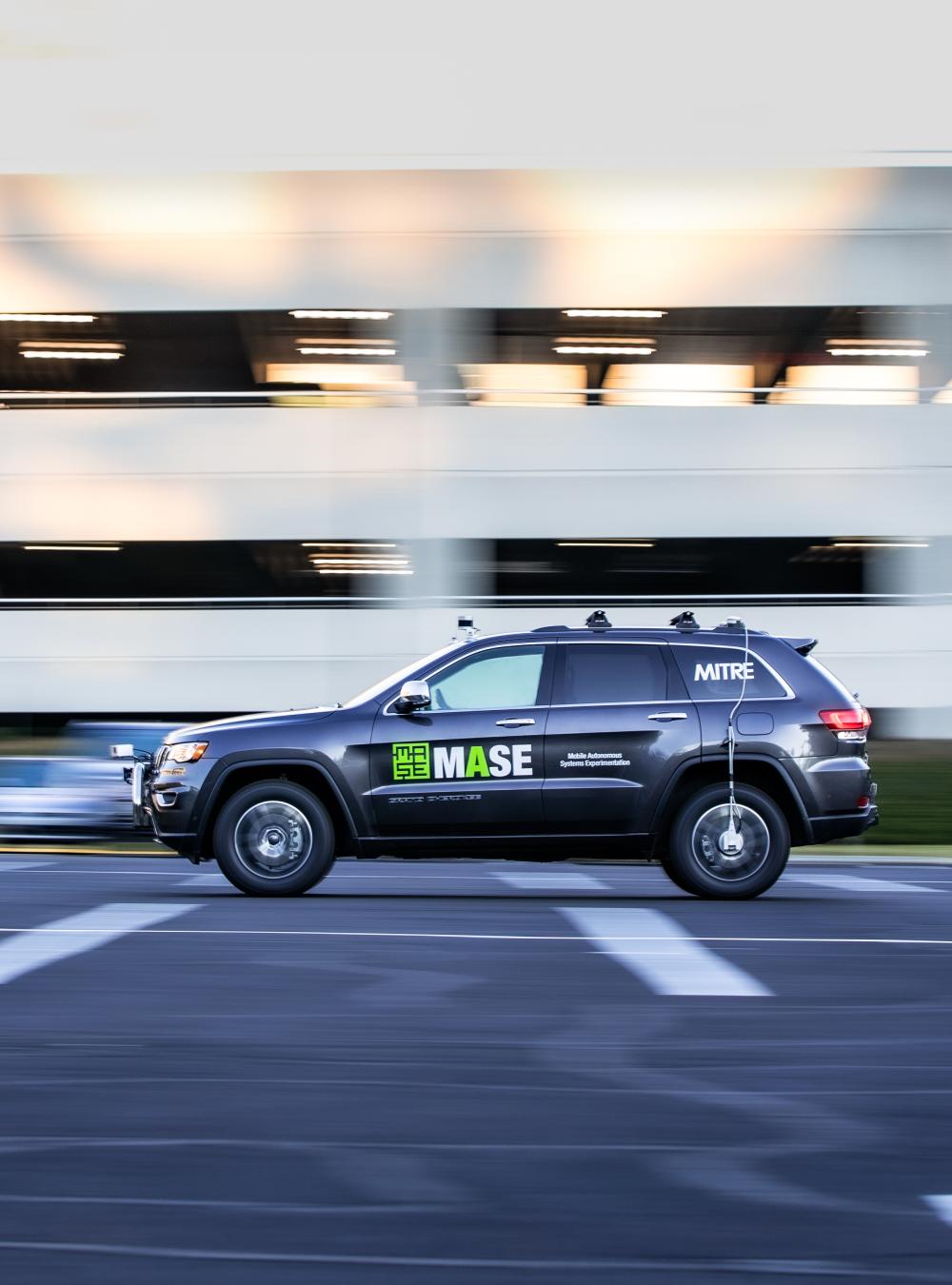Don't believe the hype—autonomous technology can't replace humans just yet. That's why a special MITRE laboratory is testing these systems to prove their reliability, accuracy, and safety.

Navigating a MASE to Unlock the Potential of Autonomous Systems
Anytime a vehicle signals a lane departure or brakes to avoid a collision, it's responding to sensors that communicate its position, speed, and location within its environment.
Assistive technologies like these, now available on most new cars, are evolving quickly and occupying important roles in the way we travel. Similar technologies are also increasingly found in our national defense, along our national borders, in our workplaces, and in our homes. Despite the hardware and software improvements, however, autonomous systems remain unreliable in many applications.
That can lead to safety issues, which is where MITRE gets involved.
"What makes autonomy so interesting to us as innovators is that it reaches into multiple domains," says Zachary LaCelle, a MITRE systems engineer. "Whether working with drones or commercial aircraft, tanks, or self-driving vehicles, we’re all trying to solve the same problems. MITRE is researching how to create an architecture that integrates autonomous modules and hardware so you can mix and match it among programs. Our work can benefit many struggling with autonomous technology challenges."
LaCelle leads the MITRE Mobile Autonomous Systems Experimentation (MASE) Laboratory at our McLean, Virginia, campus. The MASE provides a trusted, integrated testing environment for emerging hardware, software, and approaches that advance self-directed systems. Our focus on systems thinking, interdisciplinary expertise, and objectivity enable us to see obstacles and potential ways to circumvent or eliminate them.
LaCelle explains. "We have human-interaction people who are experts at cognitive loading and how to effectively communicate between computers and people. We have cyber experts and autonomy experts working on the ground and on urban air mobility and on defense applications."
A Moving Testbed for Discovery
The most visible developments in autonomous technology are taking place in the automotive sector. While MITRE works across technology and transportation spaces, the MASE lab's centerpiece is a custom-adapted 2019 Jeep. Our researchers outfitted the SUV with sensors, analytic and data recorders, and powerful computer processors to test and document new autonomy technologies and technology combinations.
Teams working in the MASE lab fabricate new technologies, evaluate existing ones, and recommend promising ways to use them.
The lab demonstrates capabilities to agencies interested in applying autonomous technology to their projects. The Departments of Defense and Homeland Security are frequent collaborators. Often, seeing the technology in action spurs additional ideas and conversation, LaCelle says.
"We have the experts available to assist in research integration. For instance, people come to us with specialized concerns such as, 'I want to test how my technology detects people.' We can provide the know-how and the testing environment to make this happen."
Following the Rules of the Road
MITRE has worked with autonomous technology in the national airspace for decades. Our first major involvement with self-driving vehicles came with our entry into the 2005 DARPA Grand Challenge, a government-sponsored road race. The MITRE Meteor didn’t bring home the trophy. Still, the competition launched much of our current research in this area.
Today, technology innovation companies from Google to Tesla compete to deploy driverless cars commercially. Self-driving vehicles operate legally in some states, but only with an attentive, human driver behind the wheel to take over if needed.
To operate safely and reliably, the vehicles need to recognize and respond to the static and moving objects in the environment around them, LaCelle says. Sensors might recognize lane markers and other vehicles but might not recognize a person walking a bicycle or a pet.
"There are things autonomous systems are very good at," LaCelle says. “They can see at the dark very effectively, for example."
Autonomous systems can also accomplish specific tasks in specific domains. They could function as shuttles, following a set schedule along a closed, set route. They can perform tasks too dangerous for humans, such as entering areas contaminated by radioactivity. A driverless "marsupial vehicle" can launch vehicles off itself if it needs to capture data from a different perspective.
Autonomous technology is also very bad at some things, like building up a semantic world model or classifying objects they haven’t seen before. "They're terrible at that."
And yet, LaCelle notes, human operators have accidents, too. A self-driving car may see and avoid hitting a darkly clothed pedestrian at night. A human relies on senses, not sensors. If the pedestrian isn't wearing reflective clothing and is walking along a dark roadway, there is a better chance of being struck by a human driver, LaCelle says.
In MITRE's Autonomous Systems Experimentation laboratory, we're studying how these systems interoperate and communicate and what the future could hold. We’re using what we discover to unlock its vast potential in defense, security, transportation, and more.
Autonomous technology has a long way to go before it replaces humans. We aren't replaceable yet. But advancements in coding and algorithms that enable autonomous systems will lead to greater improvements in safety and broader applications.
—by Molly Manchenton